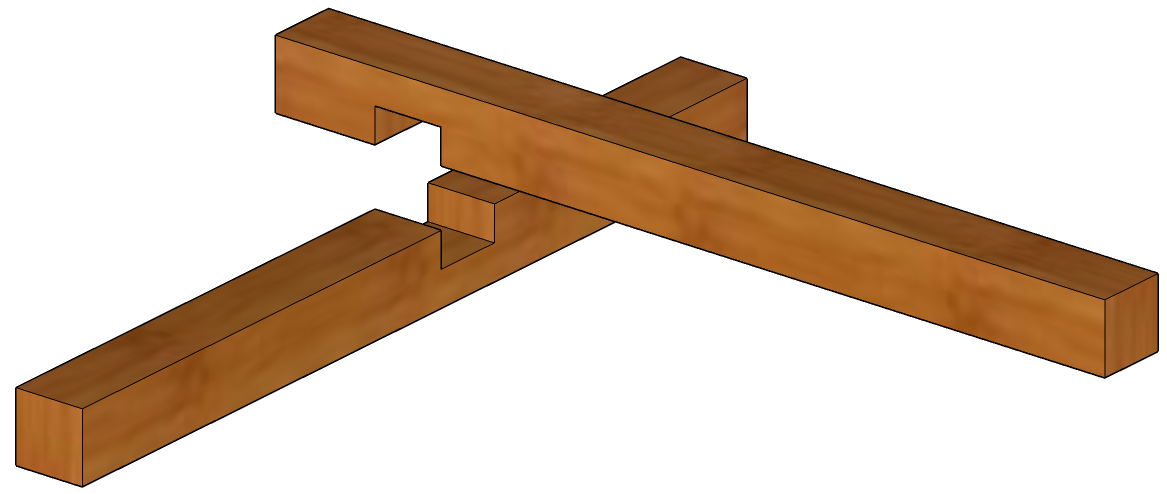Load-carrying capacity of timber joints (experimental)
No warranty, use at your own risk.
About the calculator
The calculator is ment as a demonstrator to show the capability of linear fracture mechanics to analytically determine the load carrying capacity of timber joints. It is ment for academic purpose only!
Structures with brittle behaviour and sharp corners like present in some timber joints can not be assessed by stresses and/or strains. As the corners lead to a singularity of stresses and strains, both are not suitable to assess the load-carrying capacity.
Neither linear continuum mechanics, nor nonlinear continuum mechanics is suitable to handle this problem. This is why it makes sense to apply fracture mechanic theory which was designed to calculate crack growth. For this analysis, 273 design variants were analysed with the help of the finite element method. Therefor orthotropic material behaviour has been assumed with elasticity parameters for C24 found in DIN 1052. For each design variant the energy release rate G has been computed for mode I and mode II. The calculator linearly interpolates between the results of the parameter study. The critical energy release rate in mode I and mode II is assumed to be 0.1 Nmm/mm2 which is a good choise for C24 timber to have a probability of survival of approximately 95%. As the data availibility for fracture mechanic parameter is short, some skepticism is allowed. To account for the synchron occurrence of mode I and mode II, it is assumed that crack growth occurs when G1+G2 > Gcritical.
For low l/h ratios, crack growth is unstable and crack initiation is equal to structural failure. For high l/h ratios, crack growth can be stable. This means, that crack growth will stop and then start again. The calculator only indicates crack growth initiation and does not distinguish between stable or unstable crack growth. This means that the load carrying capacity of structures with high l/h ratios may be higher than indicated by the calculator.
Revisions
2020-05-24
- created
